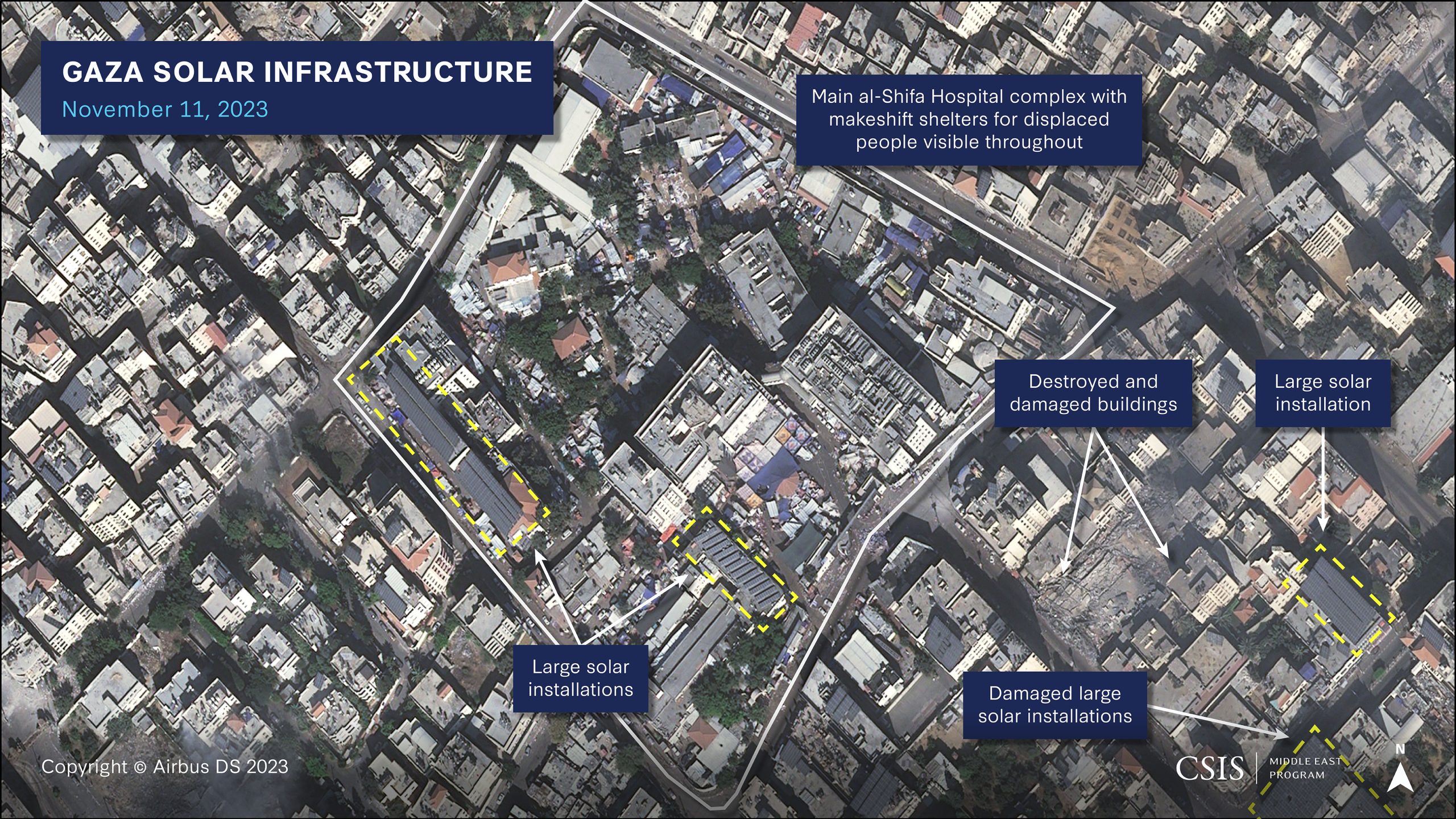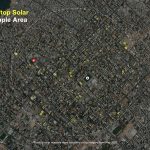In the aftermath of Hamas’s October 7 attack, the Israeli energy minister vowed “no electric switch will be turned on, no water tap will be opened, and no fuel truck will enter [Gaza] until the Israeli abductees are home.” Gaza is heavily reliant on Israel for the delivery of both electricity and diesel expressly for electricity generation, and it is experiencing widespread power outages as a result of Israel’s blockade.
In recent years, Palestinians and international actors have sought to enhance the resilience of Gaza’s electricity sector. In fact, they have installed so much solar energy for critical infrastructure, businesses, and domestic usage that the authors estimate that Gaza likely now has the highest density of rooftop solar systems in the world. Renewable electricity provides more reliable power to Gaza than is otherwise available, and it is not subject to the politicization of fuel and energy exports from Israel.
The current conflict has taken its toll, however. Israel has argued that electricity can be diverted from civilian to military purposes, and it has destroyed a significant proportion of Gaza’s burgeoning solar infrastructure during the current war. Still, solar power has provided a lifeline for Gazans when all other electricity infrastructure has failed. Gaza demonstrates both the potential of solar power in conflict-affected environments and its limitations.
Gaza’s Electricity Sector
Prior to the outbreak of war on October 7, Israel directly or indirectly supplied most of Gaza’s electricity. About half came through 10 Israeli power lines, supplying 120 megawatts (MW). While Israel charges the Palestinian Authority (PA) for this, the PA often has refused to pay, and Israel periodically has erased the debt. Gaza also had a single diesel power plant that generated an additional 65–75 MW, with fuel purchased from Israel and financed by Qatar.
The arrangement did not always work smoothly. In recent years, Israel blocked deliveries of fuel for Gaza’s power plant in August 2020, May 2021, and August 2022. Israeli strikes during past escalations also damaged electricity infrastructure, and Hamas was slow to repair it. Even in normal times, electricity demand far exceeded supply, and most Gazans reportedly only received power from the grid for six to eight hours per day.
Because of persistent shortages, Gazans innovated with different methods of electricity generation and distribution. These informal private systems provided the remaining 25 percent of electricity supply. A recent internal survey by an international humanitarian organization identified 23 different technical setups of power systems that operate beyond the grid (either entirely off-grid or hybrid). These systems include small generators and solar systems. Because Gaza has 320 sunny days a year and many buildings have flat roofs, it has ideal conditions for rooftop solar panels. The Israeli government sporadically restricted their importation, but even so, solar uptake increased dramatically.
At the household level, Gazans who could afford solar panels rapidly purchased them. The number of solar installations in Gaza grew exponentially from 12 in 2012 to 8,760 in 2019, according to a 2021 study. CSIS analysis of satellite imagery from May 2022 found at least 655 rooftop solar systems in a one square mile sample area of Gaza city, likely representing the highest density of rooftop solar panels in the world. Estimating the total number of rooftop solar systems in the Gaza Strip today is challenging, but preliminary analysis indicates that there are likely now more than 12,400 rooftop solar systems in the Gaza Strip. Land use classification conducted by He Yin at Kent State University shows that in 2023, the Gaza Strip has an area of 140 square miles, of which 38 square miles is developed. Even if the sample area studied had twice the number of rooftop solar systems as the average for developed land in the Gaza Strip, we would expect there to be a total of roughly 12,445 systems. An electrical engineer for a solar panel business in Gaza corroborated the high deployment of solar power in Gaza, estimating that at least a third of Gaza’s population and more than 50 percent of its businesses used solar panels in March 2023.
This post was originally published on 3rd party site mentioned in the title of this site






